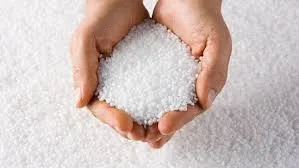Understanding Chilled Water Chemical Treatment
Chilled water systems are commonly used in commercial and industrial buildings for air conditioning and process cooling. These systems require proper maintenance to ensure efficiency and longevity. One critical aspect of this maintenance is chemical treatment, which involves the use of specific chemicals to prevent issues such as scale buildup, corrosion, and biological growth.
Importance of Chemical Treatment
The primary goal of chilled water chemical treatment is to protect the system components, such as chillers, pumps, and cooling towers. Over time, untreated water can lead to various problems
1. Scale Formation Minerals in the water can precipitate and form scale on heat exchange surfaces. This layer of scale acts as an insulator, reducing heat transfer efficiency and increasing energy consumption. It can also lead to overheating and equipment failure.
2. Corrosion Chilled water systems often contain metal components that can corrode when exposed to certain conditions, such as low pH or high oxygen concentration. Corrosion can result in leaks, loss of system pressure, and the need for costly repairs.
3. Biological Growth Warm conditions in chilled water systems can lead to the growth of algae, bacteria, and other microorganisms. Biofilm formation can clog system components and lead to health hazards, such as Legionnaires' disease, if not adequately controlled.
Types of Chemicals Used
To combat these issues, various chemicals are used in chilled water chemical treatment programs
- Corrosion Inhibitors These chemicals are added to create a protective film on metal surfaces, minimizing the likelihood of corrosion. Commonly used inhibitors include sodium nitrite, molybdate, and phosphates.
chilled water chemical treatment

- Scale Inhibitors To prevent the formation of scale, chemicals such as polyphosphates, phosphonates, and sodium hexametaphosphate are employed. These substances interfere with the crystal growth of minerals, keeping them in solution and preventing deposits.
- Biocides To control biological growth, biocides are incorporated into the treatment program. These chemicals kill or inhibit the growth of microorganisms. Common biocides include chlorine, bromine, and quaternary ammonium compounds.
Implementation of Chemical Treatment
Implementing a chilled water chemical treatment program involves several key steps
1. Water Testing Regular testing of the chilled water supply is essential to understand the chemical composition and identify any potential issues. This step helps to determine the right treatment chemicals needed.
2. Chemical Dosing Based on the results of water testing, the appropriate dosage of chemicals should be carefully calculated and administered. Automation systems can help maintain proper chemical levels in the water, ensuring continuous protection.
3. Monitoring and Maintenance Continuous monitoring of water quality and system performance is crucial. Regularly scheduled maintenance checks will also help address any emerging issues before they escalate.
Conclusion
Chilled water chemical treatment is a vital aspect of maintaining an efficient and long-lasting cooling system. By incorporating a well-planned chemical treatment program, building operators can reduce the risks associated with scale, corrosion, and biological growth. This proactive approach not only ensures optimal performance but also extends the lifespan of the chilled water system, leading to significant cost savings in the long run.

